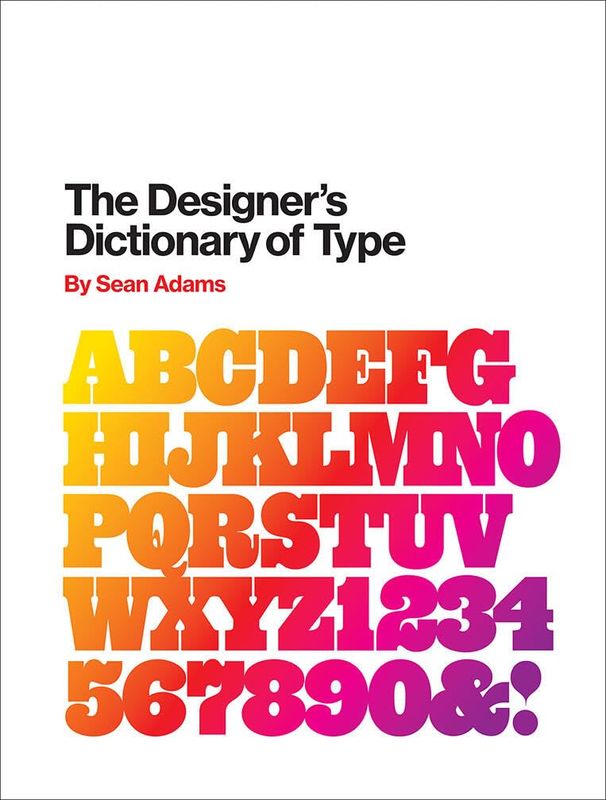Learning from Las Vegas, revised edition Book Summary
'Learning from Las Vegas' challenges traditional architectural aesthetics by celebrating the flamboyant and often dismissed design of Las Vegas. Venturi, Scott Brown, and Izenour advocate for a broader understanding of what constitutes meaningful architecture, emphasizing the role of commercial and vernacular styles. The revised edition offers fresh insights and critiques, inviting readers to reconsider the relationship between culture, space, and identity. With vibrant illustrations and compelling arguments, the authors explore how the 'Vegas ethos' can inform contemporary design. This provocative work not only reshapes architectural theory but also compels us to question our preconceptions about beauty and functionality in the built environment.
By Robert Venturi, Denise Scott Brown, Steven Izenour
Published: 1977
""The architecture of Las Vegas suggests that we can learn more from the everyday, the banal, and the symbols of popular culture than from the grand ideals of historical architecture.""
Book Review of Learning from Las Vegas, revised edition
Learning from Las Vegas created a healthy controversy on its appearance in 1972, calling for architects to be more receptive to the tastes and values of "common" people and less immodest in their erections of "heroic," self-aggrandizing monuments. This revision includes the full texts of Part I of the original, on the Las Vegas strip, and Part II, "Ugly and Ordinary Architecture, or the Decorated Shed," a generalization from the findings of the first part on symbolism in architecture and the iconography of urban sprawl. (The final part of the first edition, on the architectural work of the firm Venturi and Rauch, is not included in the revision.) The new paperback edition has a smaller format, fewer pictures, and a considerably lower price than the original. There are an added preface by Scott Brown and a bibliography of writings by the members of Venturi and Rauch and about the firm's work.
Book Overview of Learning from Las Vegas, revised edition
About the Book Authors
Robert Venturi
Robert Venturi (1925-2018) was a prominent American architect and a seminal figure in the field of postmodern architecture. He is best known for his influential writings and designs that challenge the principles of modernism. Notable works include "Complexity and Contradiction in Architecture," which advocates for a richer, more eclectic approach to design, and "Learning from Las Vegas," co-authored with Denise Scott Brown and Steven Izenour, which critiques modernist doctrines and celebrates the symbolism of the urban landscape. Venturi's writing style is characterized by its conversational tone and a deep engagement with architectural theory and philosophy, making his ideas accessible to both architects and the general public.
Denise Scott Brown
Denise Scott Brown is a prominent architect, planner, and urban designer known for her influential contributions to the fields of architecture and urbanism. Along with her husband, Robert Venturi, she co-founded the architectural firm Venturi, Scott Brown and Associates. Scott Brown's notable works include the Sainsbury Wing of the National Gallery in London and the design of the Seattle Art Museum. Her writing often reflects a deep engagement with social context and cultural meaning, blending theory with practical application. She is recognized for her commitment to elevating the role of women in architecture and for her advocacy for a more inclusive approach to design.
Steven Izenour
Steven Izenour is an accomplished author known for his insightful contributions to the world of architecture and design. He is particularly well-regarded for his notable work, 'The Great American School,' which combines his expertise in educational architecture with a profound understanding of how space influences learning environments. Izenour's writing style is characterized by clear, engaging prose that breaks down complex ideas into accessible concepts, often incorporating illustrations and examples to enhance understanding. His works reflect a deep appreciation for the interplay between architecture and its societal impacts, making his insights valuable for both professionals and general readers.
Book Details
Key information about the book.
- Authors
- Robert Venturi, Denise Scott Brown, Steven Izenour
- Published
- June 1977
- Publisher
- National Geographic Books
- ISBN
- 026272006X
- Language
- English
- Pages
- N/A
- Genres
- Architectural DesignDesign ThinkingDesign
Purchase Options
Support local bookstores: BookShop gives a portion of each sale to independent bookshops!
Similar books you might like →
A Pattern Language Book Summary
"A Pattern Language" introduces a revolutionary approach to architecture and design, emphasizing the harmony of built environments with human needs. The authors present a collection of 253 patterns that provide practical solutions for creating livable spaces, from the scale of a room to entire communities. Each pattern encapsulates observations and wisdom drawn from nature and cultural practices, urging designers to foster deeper connections between people and their surroundings. This book challenges conventional design principles, inviting readers to rethink how spaces influence human interaction and well-being. Dive into a world where every structure tells a story and transforms everyday life into an art form.
An Essay on Typography Book Summary
In 'An Essay on Typography,' Eric Gill explores the art and craft of type design, revealing how typography shapes our perception of written language. Through a blend of philosophical musings and practical insights, Gill argues that type is not just a tool for communication, but an integral aspect of visual culture. He challenges conventional approaches and invites readers to appreciate the aesthetic and ethical implications of typographic choices. This thought-provoking essay raises questions about the role of the designer in society and the impact of typography on our daily lives. Dive into Gill's world to uncover the beauty and power of letters that often goes unnoticed.
The Designer's Dictionary of Type Book Summary
Delve into the fascinating world of typography with 'The Designer's Dictionary of Type' by Sean Adams. This comprehensive guide unravels the intricacies of typefaces, revealing their unique personalities and historical contexts. Each entry offers insights that inspire creativity and enhance design skills, making it an essential reference for both novice and seasoned designers. With stunning visual examples, the book encourages a deeper appreciation for the art and science of type. Discover how the right type can transform your work and captivate your audience!
Just My Type Book Summary
In 'Just My Type', Simon Garfield explores the fascinating world of typography and its profound impact on our daily lives. From the iconic fonts that define culture to the hidden messages conveyed through typeface choices, Garfield uncovers the artistry and science behind each letter. Readers are taken on a journey through history, tracing the evolution of fonts and their creators, igniting a newfound appreciation for the words we often overlook. With humor and insight, the book invites us to rethink the way we view text and design. Prepare to look at the printed word in an entirely new light!
The Timeless Way of Building Book Summary
In 'The Timeless Way of Building', Christopher Alexander unveils a revolutionary philosophy of architecture that champions the beauty and organic nature of spaces. He argues that true architecture should resonate with human emotions and the environment, creating a harmonious living experience. Through inspiring examples and a unique pattern language, Alexander illuminates the idea of crafting spaces that feel right. This book is not merely a manual for design but a deep exploration of what makes places and communities thrive. Readers will discover a compelling approach that challenges conventional construction norms and reveals the timeless principles of creating authentic environments.
The Design of Everyday Things Book Summary
In 'The Design of Everyday Things', Don Norman reveals the hidden principles behind effective design that shapes our everyday interactions. He explores the psychological underpinnings of how we perceive and interact with objects, highlighting the importance of usability and user-centered design. Through captivating examples, Norman illustrates how poor design can lead to frustration, while thoughtful design enhances our experience. This book challenges readers to rethink the functionality of everyday items, making them consider the design choices behind the objects they encounter. Ultimately, it invites us to demand better designs that cater to our needs, making the mundane extraordinary.
Don't Make Me Think, Revisited Book Summary
In 'Don't Make Me Think, Revisited', Steve Krug presents a timeless guide to web usability, challenging the notion that users read websites thoroughly. With humor and clarity, he emphasizes the importance of intuitive design, advocating that simplicity trumps complexity. Krug's insights encourage designers to prioritize user experience, making navigation as effortless as possible. Through practical examples and actionable advice, he unveils common pitfalls to avoid. This essential read will transform the way you think about designing websites and engaging users—are you ready to rethink your approach?
100 Things Every Designer Needs to Know about People Book Summary
In '100 Things Every Designer Needs to Know about People,' Susan Weinschenk unveils essential psychological principles that can enhance design effectiveness. With insights drawn from cognitive science, the book explores how people perceive, interact with, and make decisions about design. From the nuances of color perception to the importance of empathy in user experience, Weinschenk offers practical strategies for designers. Each principle is supported by fascinating research, making the content both informative and engaging. This enlightening guide equips designers to create more intuitive and user-friendly experiences, sparking curiosity about the intersection of psychology and design.
Showing 8 of 30 similar books
Similar Book Recommendations →

Adam Savage's Book Recommendations
Adam Savage is an American special effects designer, actor, and television personality best known for his work on the popular science entertainment show "MythBusters." He has made significant contributions to the popularization of science and engineering through his engaging presentations and experiments. Savage is also an accomplished author, with his book "Every Tool's a Hammer: Life Is What You Make It" offering insights into creativity, problem-solving, and the maker culture. His dedication to hands-on learning and DIY innovation has inspired a wide audience of all ages. Beyond his television and literary work, Savage continues to influence the maker community through his website, Tested.com, where he shares projects and tutorials.

Phil Libin's Book Recommendations
Phil Libin is a renowned entrepreneur and technology executive, best known for co-founding and serving as the CEO of Evernote, a highly influential note-taking application that has transformed productivity and personal organization. Under his leadership, Evernote grew to over 100 million users globally, establishing itself as a pioneer in the personal and professional productivity space. In addition to his work with Evernote, Libin co-founded All Turtles, an AI startup studio, and serves as the CEO of mmhmm, a company enhancing virtual communication through innovative video tools. His contributions to the tech industry have been widely recognized, earning him a reputation as a forward-thinking leader in digital innovation. Although not primarily known for literature, his insights on technology and entrepreneurship have been featured in various publications, inspiring many in the industry.

Caterina Fake's Book Recommendations
Caterina Fake is an American entrepreneur and investor, best known for co-founding Flickr, one of the first photo-sharing platforms that helped define social media and web 2.0. After the success of Flickr, Fake went on to co-found Hunch, a recommendation engine that was later acquired by eBay. She is a partner at Yes VC, a venture capital firm that invests in early-stage startups, with a focus on companies that foster human connection and creativity. Fake is also an advocate for ethical technology and often speaks about the importance of designing products that prioritize user well-being. Her contributions to tech and her insights on the intersection of technology and culture have made her a respected leader in the industry.

Andy Budd's Book Recommendations
Andy Budd is a renowned author and user experience (UX) designer, best known for his influential work in the field of web design. He co-authored "CSS Mastery: Advanced Web Standards Solutions," which has become a seminal text for web developers worldwide. As a founding partner of the consulting firm Clearleft, Budd has made significant contributions to advancing UX design practices. He is also a sought-after speaker at design conferences and an active advocate for the design community. Through his writing and leadership, Budd continues to shape the future of digital design.

Ryan Hoover's Book Recommendations
Ryan Hoover is the founder of Product Hunt, a popular platform where users discover and share new tech products, apps, and tools. Hoover started Product Hunt as a side project, which quickly grew into a thriving community for tech enthusiasts and entrepreneurs. The platform has helped launch countless startups and has become an essential resource for finding innovative products. In addition to Product Hunt, Hoover is an investor and writer, often sharing insights on startup culture and product development. His work has made him a key figure in the tech and startup ecosystems.

Naval Ravikant's Book Recommendations
Naval Ravikant is an entrepreneur, angel investor, and philosopher, best known as the co-founder of AngelList, a platform that connects startups with investors. Ravikant is a prolific thinker and writer on topics such as startups, investing, and personal well-being, sharing his wisdom through essays, podcasts, and social media. He has invested in over 100 companies, including Uber, Twitter, and Yammer, making him one of Silicon Valley’s most successful angel investors. Ravikant is also known for his philosophical musings on wealth, happiness, and the meaning of life, which have garnered him a large and dedicated following.

Stewart Brand's Book Recommendations
Stewart Brand is an influential American writer, best known for founding the Whole Earth Catalog, a publication that became a cornerstone of the counter-culture movement in the late 1960s and early 1970s. His pioneering work in promoting environmental sustainability and self-sufficiency has had a lasting impact on both literature and society. Brand is also a co-founder of The WELL, an early online community that predated the widespread use of the internet and helped shape the development of digital culture. He has authored several significant books, including "The Media Lab" and "Whole Earth Discipline," which explore technology's role in environmental and societal issues. Brand's contributions continue to influence contemporary discussions on ecology, technology, and community building.

Daniel Burka's Book Recommendations
Daniel Burka is a prominent figure in the tech and design world, best known for his significant contributions to digital product design. As a design partner at GV (formerly Google Ventures), he has played a crucial role in shaping the user experience of numerous successful startups. Burka co-founded the design agency MetaLab, which has worked with top-tier clients like Slack and Coinbase. Additionally, his work at Digg as the Director of Design helped pioneer social media design trends in the early 2000s. While not primarily an author, Burka's influence extends into literature through his insightful writings and talks on design and innovation.
Showing 8 of 14 related collections
“"The architecture of Las Vegas suggests that we can learn more from the everyday, the banal, and the symbols of popular culture than from the grand ideals of historical architecture."”
Learning from Las Vegas, revised edition
By Robert Venturi, Denise Scott Brown, Steven Izenour
Frequently Asked Questions
Explore Our Catalogue
Discover a world of knowledge through our extensive collection of book summaries.
Genres
Genres
Genres
Featured Collections
- Top Book Club Picks
- One-Stop Nutrition
- Summer Reads 2024
- Best Beach Reads 2024
- Work-Life Balance Guide
- Time Management
- Healthy Foods
- Entrepreneur Toolkit
- Mind & Body Wellness
- Future Tech Insights
- Leadership Essentials
- Financial Freedom
- Sci-Fi Masterpieces
- Parenting 101
- Books That Became Blockbusters
- Guide to a Healthy Pregnancy










